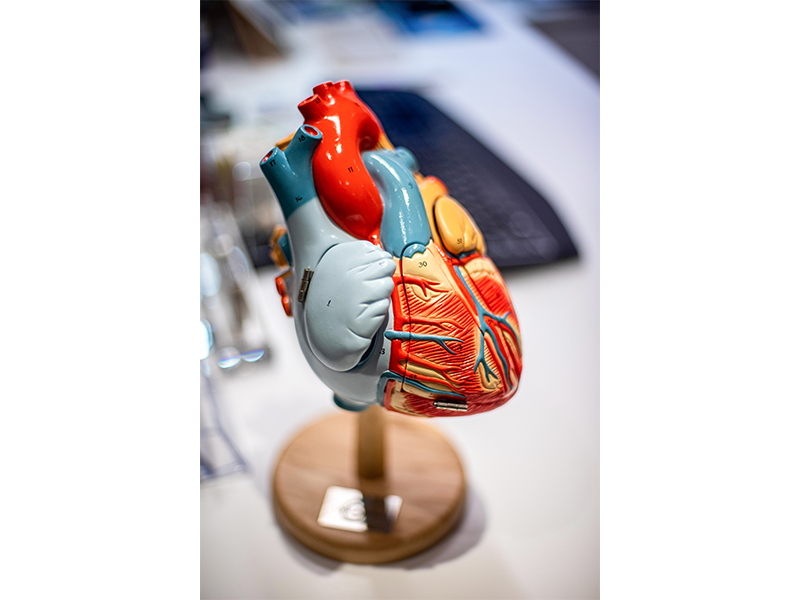We learn more about the symptoms and risk factors surrounding stroke, from cardiologist Dr Fung Wing Hong. Dr Fung is the clinical director of the Cardiac Electrophysiology Laboratory Heart Centre at Hong Kong Adventist Hospital.
What exactly is a stroke? Is it related to a heart attack?
By definition, stroke is an acute brain disorder which is due to problems with the blood vessels. We generally classify stroke into two different types: the first is due to bleeding inside the brain, usually on account of a rupture of the blood vessels; the second one – and this is the more common type – is due to a blockage of the blood vessels. These are the two broad types of stroke.
I wouldn’t say that heart attack is directly related to stroke, but they do share a common aetiology, or cause. This is why it’s not surprising that some people can suffer from both together.

What are the symptoms of stroke?
There’s a wide range of symptoms related to stroke. These can be as simple as a feeling of numbness on one side of the face or one half of the body, or, in more severe cases, a person might experience a slurring of speech, or feel they have a problem with limb weakness on one side of the body. In the most severe case, people can just pass out or even be in a comatose state. These are all symptoms of stroke.
Does a person suffering from stroke always know they are having a medical “episode”?
What a person feels can be quite variable. Some will just feel numbness that lasts for a few seconds or minutes and then it goes away – they may not even think they’ve had a stroke. In the most obvious cases, however, they will find a problem with their speech, or they may drool, or they may not be able to move one side of the body – this is the more severe example, and of course most people will quickly look for medical attention with these cases.
Sometimes, though, it just goes unnoticed. Not surprisingly, there are instances where we use imaging tools and find that a patient has actually had multiple episodes of stroke, but they haven’t felt it; yet, in the CT scan, we can detect these problems within the brain.
What should a bystander do if they feel someone might be having a stroke?
If you suspect a person might be having a stroke – for example, if they present with slurred speech or they can’t move one side of the body – then you should call an ambulance urgently. The reason for making an urgent call is that it’s in the first three to six hours after a stroke – the so-called “golden hours”, as they’re known – when doctors may be able to save a patient’s life by means of emergency medication or intervention. So, calling the ambulance is the most important thing you can do.
Who typically suffers from a stroke, what are some of the main risk factors, and who is at highest risk?
Stroke still happens most commonly in elderly people – especially in those with traditional cardiovascular risk factors. For example, if they’re suffering from diabetes, if they have high blood pressure or high cholesterol levels, or if they have coexisting heart rhythm disorder – in particular, atrial fibrillation – they are at a very high risk of having a stroke, and they should seek medical attention.
You mentioned atrial fibrillation; what is this, and how is it linked to stroke?
Atrial fibrillation is the commonest human sustained arrhythmia; it also happens more frequently in elderly people. In patients who have a normal heart rhythm, the heart beats one by one in a regular manner. With atrial fibrillation, however, the heartbeat becomes irregular. As a consequence, the atrium of the heart chamber can lose its function as a pump, resulting in low blood flow in the chamber – and that’s when a blood clot can form. The clot can then follow the circulation into the brain, causing a blockage in a blood vessel, resulting in a stroke.
Atrial fibrillation is the most common cause of stroke – especially major stroke – in elderly people. This is why we always do an EKG to check the heart rhythm of these patients; and, if necessary, we do an ultrasound to check the heart function too.
How can a stroke be prevented, including in those who have atrial fibrillation?
There are many ways to prevent stroke. Number one, of course, is to lead a healthy lifestyle; this includes regular exercise – at least 30 minutes a day – and also maintaining a healthier diet; eat more greens and more salads, use a better oil for cooking (olive oil, for example), and try to avoid too much meat; these will all help to control cholesterol levels.
A more specific measure is to control the three important risk factors for stroke, which include blood pressure, sugar levels and cholesterol levels. By controlling these things, the majority of people can prevent stroke.
Patients with atrial fibrillation, who, as I’ve said, have a very high risk of stroke, will likely require a blood thinner. And the same applies to patients with a coexisting heart problem, it’s very important for them to use certain kinds of blood thinners; even a simple drug like aspirin can be effective in preventing stroke in high-risk patients.
Can COVID-19 infection increase the risk of stroke?
Based on all the latest medical literature, COVID has been shown to increase the risk of stroke, even in younger patients. Even very asymptomatic patients who are infected with COVID-19 seem to have a higher risk of stroke than the general population. So we have to pay particular attention to these patients, especially if they have coexisting cardiovascular risk factors.
What got you interested in cardiology as a specialty?
A heart problem is a very common disorder, and it can also be very serious – one minute you can be talking to a person, and the next minute they can pass out or even pass away on account of a heart disorder. It was this factor that even as a young student made me eager to treat the heart and its problems – and that’s why I’ve spent most of my career in cardiology.
Expat Health Essentials
You can find out more about stroke symptoms, risk factors and preventative measures in this video.
Subscribe to Expat Living now so you never miss an issue.






